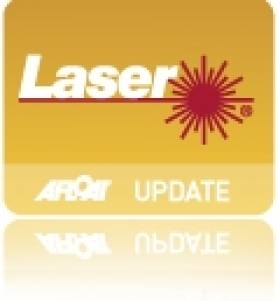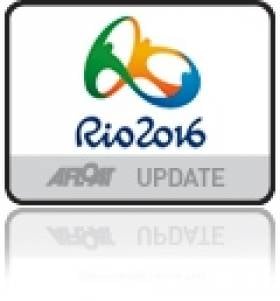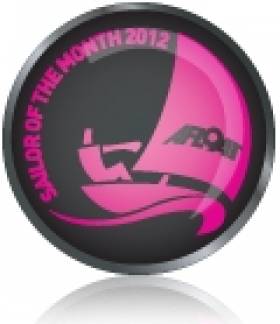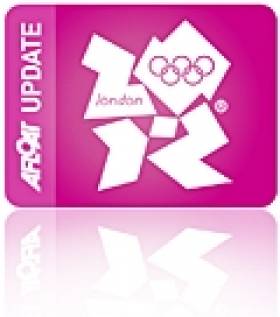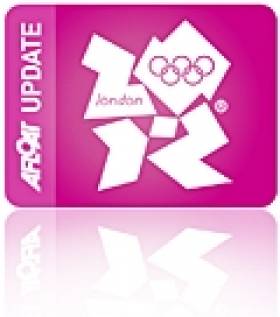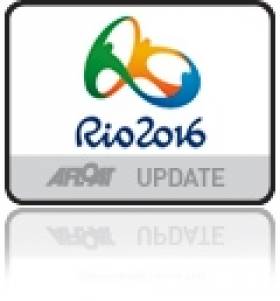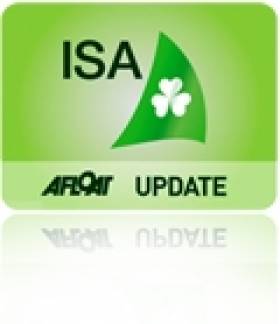Displaying items by tag: Olympics
Laser Designer Launches Iconic Boat Under New Name
#Laser - The sailing world has been taken by surprise with the news that the designer of the Laser has launched his iconic design under a whole new brand amid allegations over royalty payments.
Bruce Kirby - whose single-handed one-design has become a staple at the Olympic Games - has apparently signed all new builder agreements to manufacture his rechristened Kirby Torch design, after terminating his previous deals at the end the last year.
"The issue is supply of the Kirby sailboat and parts to sailors worldwide," according to the Kirby Torch website. "After numerous attempts, Bruce Kirby felt he had no choice but to withdraw Laser brand building rights in North America and Europe."
It's alleged that lack of royalty payments for the design by at least one top manufacturer prompted the move by Kirby to strike out on own, but nothing has been confirmed as of this time.
It is also not known exactly what the consequences will be for currently sailed Lasers and for the International Laser Class Association (ILCA), although the Kirby Torch website states that all ISAF-plaqued Lasers are class legal under the renamed fleet.
More on this story as it develops...
O'Leary & Burrows Could Go For Gold In Rio as Star 'Secures A Slot' UPDATED
UPDATE: The governing body for the Star class is reporting that the earlier news of its reinstatement in the Olympics for 2016 is still "just a rumour".
In a statement, International Star Class Yacht Racing Association (ISCYRA) president Bill Allen said that while the Olympic committee in Brazil "may request an 11th medal for sailing", no decision has yet been made and likely will not be made until summer at the earliest.
"The spreading of rumours concerning Olympic status does not help our position," he added, saying he would inform Star class membership with any new developments as and when they arise.
#Rio2016 - Ireland's Star sailors Peter O'Leary and David Burrows could have another shot at Olympic gold in Rio if the latest news from the IOC is to be believed.
Sailing Anarchy reports that "the ink is dry" on an agreement to secure a place for the Star class in the sailing schedule at the 2016 Olympic Games in Rio de Janeiro.
The move is thanks to a "quirk" in IOC regulations that allow the host country of any Olympic Games to add an event of their own choosing, provided the hosts cover the costs.
And with local sailing duo Robert Scheidt and Bruno Prada in the Star's top ranks - claiming the bronze in London 2012 - the return of the class certainly seems a no-brainer.
The only question remaining now is whether O'Leary and Burrows - who finished 10th in the class at Weymouth last summer - want to go for gold one more time in Rio!
Annalise Murphy is Irish Sailor of the Year for 2012
#sailoroftheyear - You followed her impressive exploits right here on Afloat.ie throughout the year, and your votes counted. So it's only right that our Olympic sailing hero Annalise Murphy should receive the honour of being named Afloat.ie Sailor of the Year for 2012.
The young sailor was recognised for a remarkable 12 months of incredible achievement, capped off by her stirring performance at the London Olympics - and topped a shortlist that featured fellow Olympic challengers Peter O'Leary and David Burrows, and such up-and-coming talents as Sophie Browne, Finn Lynch and Fionn Lyden.
Murphy's simply outstanding fourth-place finish in the Laser Radial at the London Games was Ireland's best Olympic result in 30 years in any class. Despite the heartbreak of so narrowly missing out on Olympic bronze in the medal race, her accomplishment was appreciated far beyond the Irish sailing community, and raised the profile of the sport in Ireland immeasurably.
The then 22-year-old, who sails for the National Yacht Club in Dun Laoghaire, had the entire country on edge last August as she battled with what Afloat's own WM Nixon described as the "fierce challenge" of being top of the Women's Laser Radial class, in stature as well as performance.
At 6ft 1in, the woman they call 'The Irish Lever' was undoubtedly the tallest in her 41-boat fleet at London 2012, and some British yachting pundits were quick to put down her early regatta wins purely to her larger frame.
But Murphy - who headed to the Olympics with confidence after a podium finish at the Skandia Sail for Gold, and a medal at Weymouth the previous year - proved that her success was no fluke, holding the gold medal position for almost half the regatta and entering the last race in third place overall.
Facing unbelievable pressure as the regatta reached its final stages on the Nothe course in Weymouth, in tricky conditions that would spread wide the times of most club racers, it's to Murphy's estimable credit that she was able to keep so tight with the front-runners, and it was only in the last few seconds - and last few metres - that she was knocked out of the bronze position.
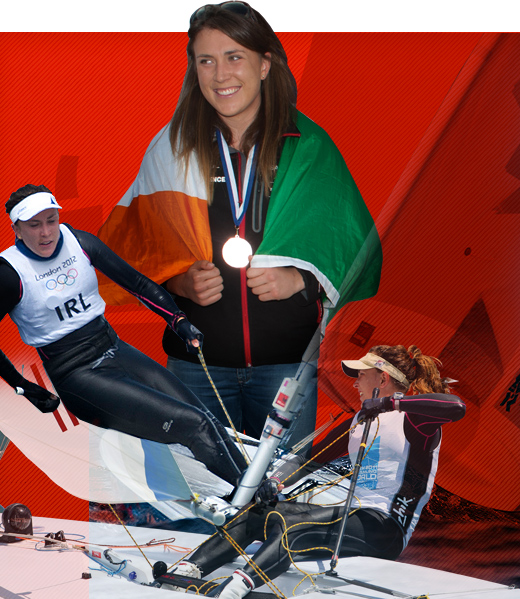
We'll never forget the tears she shed after the medal race's conclusion - the whole of Ireland shared in her heartbreak. But we also shared the belief that that was but one setback in a world-class sailing career that's only just beginning.
Considering the talented and dedicated NYC sailor and UCD student is still only 23, there's clearly plenty of sailing success awaiting in her future, and she starts 2013 on her 'Road to Rio' aiming to clinch a medal at the 2016 Olympic Games.
In spite of losing out on a podium finish at the ISAF Sailing World Cup in Miami earlier this month, the fact that she came so close - and led the charge in the early stages - proves that she can stand proudly with the elite in her class. And she'll have another chance to prove herself in the next round of the ISAF World Cup in Palma de Mallorca on 30 March.
The Sailor of the Year honour is the very least the amazing Annalise Murphy deserves for doing Ireland so proud in 2012.
Arise Sir Ben! British Olympic Sailor Knighted in New Year Honours
#Honours - British Olympic sailing hero Ben Ainslie has finished out his record-breaking year with a knighthood in the New Year Honours list.
The most decorated Olympic sailor of all time claimed his fourth straight gold – and fifth Olympic medal in total – on the waters of Weymouth and Portland this summer in what was a fitting curtain call to a stellar 16-year Olympic career.
“This is an incredible honour,” the 35-year-old Ainslie told the Royal Yachting Association. “When I set out Olympic sailing 20 years ago, I never would have dreamt this would happen.
“I couldn't have achieved this honour without the support of all the people who have helped me throughout my career and so I hope they can also take some pride in this moment.”
Last month Ainslie announced his retirement from Olympic sailing in order to focus on his America’s Cup ambitions. His announcement came just weeks after he was named the male winner of the 2012 ISAF Rolex World Sailor of the Year Award at the Mansion House in Dublin.
In other honours, David ‘Sid’ Howlett - who coached Ben Ainslie to his record-breaking fourth Olympic gold and sixth Finn World Championship title this summer - was made a Member of the Order of the British Empire (MBE) for his services to British sailing since 1988.
And Helena Lucas, who became the first Paralympic gold medallist for sailing as the only female among an otherwise all-male fleet in the 2.4mR class, was also awarded an MBE.
“It's a real honour and a fantastic end to an amazing year!” she said. “It was totally unexpected as there have been so many outstanding sporting achievements this year!”
Beyond the Olympics and Paralympics, there was also recognition for Malcolm Torry, who was awarded the British Empire Medal (BEM) for services to sailing and to people with disabilities for his work through Carsington Sailability in Derbyshire.
RYA chief executive Sarah Treseder commented: “We are all absolutely thrilled for sailing’s award recipients, who have all made major contributions either to the RYA community, or the sport of sailing and its successes on the world stage across so many years.
“They are such great ambassadors for our sport, and we’re delighted and so proud that their hard work and achievements have been recognised after the sporting success story that 2012 has been for the country.”
Star Sailor O'Leary Set to Tie The Knot With Olympian Derval
#Olympics - It was a match made in Beijing - and now four years on, Crosshaven sailor Peter 0'Leary and sprint hurdles champion Derval O'Rourke have announced their engagement, as Independent Woman reports.
The Olympian couple are keeping mum for the time being, but it's expected that they will wed in their home county of Cork.
O'Leary and O'Rourke apparently struck up a companionship at the closing ceremony of Beijing 2008, when both were coming down after disappointing Olympic campaigns in their respective sports.
That first conversation quickly blossomed into a relationship that's clearly done no harm to their improving performances on the track and on the water - O'Rourke reaching the 100m hurdles semi-finals, and O'Leary finishing a respectable 10th in the Star with partner David Burrows.
It's also surely a welcome turn of events for O'Leary especially after a stressful few months following London 2012 that culminated in a warning from the International Olympic Committee over his betting on a competitor at the 2008 Games.
IOC chiefs announced last week that they had "no proof of any match fixing" and agreed that O'Leary was at the time not fully aware of the rules against competitors betting on Olympic events.
The Irish Sailing Association (ISA) has hit out at what it called a "malicious campaign" against the Star helmsman, noting that the facts present a very different picture from the story that circulated in the media on the eve of his opening race at Weymouth this summer.
Irish Sailing Hits Out at O'Leary Treatment Prior to London Olympics
#olympic – Following publication of the report by the International Olympic Committee's (IOC) Ethics Commission this week the Irish Sailing Association (ISA) has responded to the findings relating to its sailor Peter O'Leary during the 2008 Beijing Games.
The ISA has hit back at what it has described as a 'malicious campaign' aimed at its Star helmsman that began on the eve of the London Olympics.
O'Leary's performance in Weymouth was overshadowed by the IOC probe into the Irish sailors bet on the winner of the Star Class Olympic results four years earlier.
The IOC issued the Cork helmsman with a warning this week but this has not drawn a line on the matter with the ISA retaliating this afternoon.
The IOC statement said that they had found "no proof of any match-fixing" and that O'Leary "was not fully aware" of a new protocol against participants betting on Olympic results.
An ISA statement released this afternoon notes that the facts found present a vastly different picture than the story portrayed on the eve of O'Leary's opening race of the London 2012 Olympics with team-mate David Burrows at Weymouth.
The Irish Sailing Association statement says:
While the report clearly shows that O'Leary made a mistake which he freely admitted, it is clear that the rule concerned was a recent development unknown to many athletes, not just O'Leary. While he had been a competitor in the event on which he placed a bet, the report states that this was done on the day of the race for which he had not qualified. Therefore he was not in a position to affect the outcome of the competition which is the purpose of the ban on betting by athletes.
'O'Leary and Burrows placed tenth overall in Weymouth. Their form prior to this indicated at the very least fifth was attainable. They regularly placed higher than the eventual Gold medallists. The effect of this malicious campaign achieved someone's aim.' stated James O'Callaghan, ISA Olympic Performance Director.
The IOC report did not refer to the manner in which this matter was brought into the public arena except to state that it arose from an anonymous email. The motive and timing of this matter, some four years after it occurred has left many unanswered questions.
The ISA regrets that these questions have never been properly probed prior to, during or since this summer's Olympics.
O'Leary Let Off With Warning Over Beijing Bet
#OLYMPICS - Irish Olympic sailor and current All-Ireland sailing champion Peter O'Leary has been let off with a warning by officials after betting on a competitor to win at the 2008 Games in Beijing.
O'Leary and his then partner Stephen Milne did not qualify for the Star class medal race in Beijing, in which O'Leary won €3,600 after placing a €300 bet on 12-1 Britain.
The story came to light days before O'Leary and current teammate David Burrows began their Star class campaign at this summer's London Olympics, prompting an investigation by the International Olympic Committee (IOC).
But IOC chiefs announced yesterday that they had found "no proof of any match-fixing".
While Olympic athletes are banned from betting on Olympic events, the IOC's ethics commission agreed that O'Leary was not fully aware of the rules at the time.
"The athlete was unaware he could not bet on Olympic events," said IOC spokesperson Mark Adams. "It is not something we agree with and we condemn it but we will not take any more action."
O'Leary and Burrows finished 10th in the Star class at the London Games in what was a milestone summer for Irish sailing on world sport's biggest stage.
Bitter Blow for Kites as Windsurfing is Reinstated in Olympics
#OLYMPICS - Windsurfing has been reinstated in the Olympic Games programme at the expense of new class kitesurfing after a vote by the International Sailing Federation (ISAF) yesterday, as Eurosport reports.
It had been expected that sailing's world governing body would reach a compromise of sorts at its annual general meeting in Dun Laoghaire by keeping both classes in the Rio Games in 2016.
The original decision to replace windsurfing with the new sport of kitesurfing back in May was considered a surprise move, but the ISAF has surprised again with its reversal of that decision.
Windsurfing's supporters were said to be "shell-shocked" by the original vote, and vowed to lobby the ISAF to overturn the decision in Dublin, for which they needed a two-thirds majority.
Israel's sailing head Yehuda Maayan told Reuters that delegates had likely been confused about the original vote because of language difficulties, noting that the Spanish delegate had voted for kiteboarding by mistake.
Among those expressing their disappointment at the about face was Virgin founder Richard Branson, who wrote on his blog that the ISAF had "have misled everybody and been very short-sighted in making this knee-jerk decision".
He added: "Their original decision was the right one and a brave one, although my own feeling is that there is room for both sports in the Olympics. If they had to drop anything it should have been one of the less exciting sailing races, which really don't capture the public's imagination."
The move is also a bitter blow for Irish kitesurfer Claudine Murphy, sister of Olympic star Annalise Murphy, who had been campaigning in the new class to make it a sister act at the Rio Games.
In other news from yesterday's ISAF AGM, new members of the ISAF Council have been announced.
Italy's Carlo Croce was elected president and chair of the council that also includes seven vice presidents: George Andreadis (Greece), Chris Atkins (UK), Adrienne Greenwood (New Zealand), Nazli Imre (Turkey), Gary Jobson (USA), Quanhai Li (China) and W Scott Perry (Uruguay).
Also on the council are a non-voting treasurer (yet to be confirmed), 28 representatives from member national authorities (MNAs) and individual representatives from the athletes' commission, the ISAF classes, offshore sailing and women's sailing. Sailing.org has full details on the new council HERE.
from ISAF
Kiteboards Out / Windsurfing Back In
Dun Laoghaire, Ireland: After three days of meetings, the ISAF Annual Conference drew to a close Saturday as the final decisions affecting the sport moving forward were made.
23 submissions relating to the events and equipment for Rio 2016 were received by ISAF in advance of the Conference. In accordance with the ISAF Regulations, before the detail of any of these particular submissions could be discussed, Council were required to vote on a motion to re-open the debate on the subject. The Regulations specify that 75% of members must agree to the motion.
The submissions were presented as six proposals and Council asked to vote on them in terms of the specific changes they proposed. The first proposal grouped. 26 Council members voted in favour and 12 were against.
Proposal 2, which featured Submission 063-12, related to Men's Kiteboarding, Women's Kiteboarding and 2nd One Person Dinghy - Finn. 14 Council members voted in favour and 23 were against and 1 abstained.
With 38 possible votes, the 75% requirement was not achieved on either proposal so the events and equipment as approved in May 2012 remain for Rio 2016.
However, at the ISAF General Assembly part of the business for the 106 Member National Authorities (MNAs) who were present was to review any regulations made or amended in any substantive way by Council since the last Ordinary Meeting which was in November 2011.
ISAF had been notified of three amendments proposed by MNAs which concerned the first two lines of Regulation 23.1.4 (Men's and Women's Kiteboarding).
As defined in the Articles of ISAF, decisions at the General Assembly shall be taken by a simple majority of votes of those present and entitled to vote. There were 114 possible voters, including the ISAF President and Vice-Presidents.
After a lengthy debate the MNAs approved the first proposal which reinstated Men's and Women's Boards - RS:X.
ISAF Regulation 23.1.4 now reads:
Men's Board - RS:X
Women's Board - RS:X
Men's One Person Dinghy - Laser
Women's One Person Dinghy - Laser Radial
Men's 2nd One Person Dinghy - Finn
Men's Skiff - 49er
Women's Skiff - 49erFX
Men's Two Person Dinghy - 470
Women's Two Person Dinghy - 470
Mixed Two Person Multihull - Nacra 17
sailing.org
ISA Chief Sees Bright Future for Irish Sailing
#IRISH SAILING - Irish Sailing Association (ISA) chief executive Harry Hermon took time out from the ISAF annual conference in Dublin this week to talk to Sport for Business about the growth of sailing in Ireland.
“2012 has been in many ways a breakthrough year for the sport,” he said. “We hosted so many major events during the year, from the Volvo Ocean Race finale in Galway to the World Youth Championships on Dublin Bay and of course it was an Olympic year and we had our strongest performance for many years.”
Aside from building on commercial partnerships, Annalise Murphy's near-medal-winning performance at the London Olympics was a boon for the profile of sailing in the public's imagination, and Hermon intends for the ISA to capitalise on this in the years to come, both for the Rio Games in 2016 and beyond.
“20,000 young people are coming through certified courses each year and staying with the sport," he said. "In addition we are reaching out to tens of thousands more through multi-activity camps ‘on the water’ around the coastal and inland waterways that are such an attribute in Ireland.
“We have a sport that enables 18-year-olds to race alongside their grandparents and few can offer such a crossover appeal.”
Sport for Business has much more on the story HERE.
Rowing Ireland Appoint Espersen as New High Performance Director
# ROWING: Rowing Ireland have chosen Morten Espersen to be their new High Performance Director. The 61-year-old served as HPD in Denmark from 1993 to 2001 and went on to chair Denmark’s executive board for elite rowing. Denmark has had great success in the last two decades: their premier crew, the lightweight four, took three gold and two bronze medals in the last five Olympic Games, while the lightweight double scull took gold at London 2012. Fie Udby Erichsen also took a silver medal in the women's single sculls in London.
In a statement released by Rowing Ireland, Espersen said: “Rowing Ireland has the potential to succeed at the highest level and, working together with all stakeholders, I believe that this goal can be achieved.”
Espersen will take up his post in February. He will be based at the National Rowing Centre in Cork. He succeeds Martin McElroy, who has recently been appointed Performance Director for men's rowing in Canada.


























